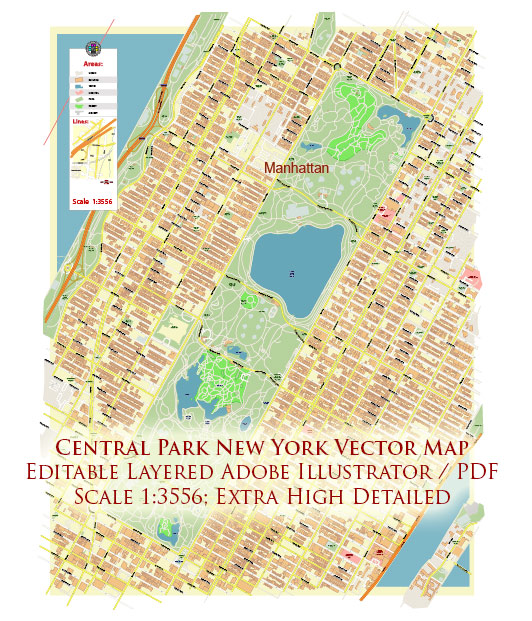Central Park in New York City is a massive urban park located in the heart of Manhattan. It covers 843 acres and is one of the most iconic and visited parks in the world. The park was designed by landscape architects Frederick Law Olmsted and Calvert Vaux and officially opened in 1858. It is renowned for its picturesque landscapes, diverse recreational facilities, and architectural elements that enhance its natural beauty.
Here are some key architectural features and elements within Central Park:
- The Mall and Literary Walk:
- A tree-lined promenade leading to the Bethesda Terrace, the Mall is flanked by American elm trees and statues of famous literary figures, hence the name “Literary Walk.” The design creates a sense of grandeur and formality.
- Bethesda Terrace and Fountain:
- A two-level platform with a grand staircase leading down to the lower level. The terrace overlooks the Bethesda Fountain and Lake. The architecture is characterized by intricate carvings and a sense of classical elegance.
- Bethesda Fountain:
- This iconic fountain features the Angel of the Waters statue at its center, designed by Emma Stebbins. The statue symbolizes the healing powers of water. The terrace and fountain are popular gathering spots.
- Bow Bridge:
- A picturesque cast-iron bridge that spans the lake. It’s a popular location for photography and provides stunning views of the surrounding landscape.
- Belvedere Castle:
- Originally designed as a Victorian Folly (a decorative building with no real purpose), Belvedere Castle now serves as a visitor center. It offers panoramic views of the park and the city skyline.
- Conservatory Garden:
- Located in the northeastern corner of the park, the Conservatory Garden is a beautifully landscaped formal garden. It features Italian, French, and English garden styles, each with its distinct architectural elements.
- The Great Lawn:
- This vast open space in the center of the park is a popular area for sports and recreational activities. The lack of tall structures around the Great Lawn provides a sense of openness and tranquility.
- The Ramble:
- A more naturalistic area with winding pathways, the Ramble offers a contrast to the formal designs found in other parts of the park. It provides a sense of wilderness within the urban landscape.
- Wollman Rink and Central Park Zoo:
- While these areas are primarily recreational, they also contribute to the park’s overall design. The Wollman Rink is a seasonal ice skating rink, and the Central Park Zoo features architecture that complements the park’s aesthetic.
Central Park’s architecture seamlessly blends with its natural elements, creating an oasis in the midst of the bustling city. The deliberate design choices of Olmsted and Vaux aimed to provide a diverse and harmonious experience for park visitors.


 Author: Kirill Shrayber, Ph.D.
Author: Kirill Shrayber, Ph.D.